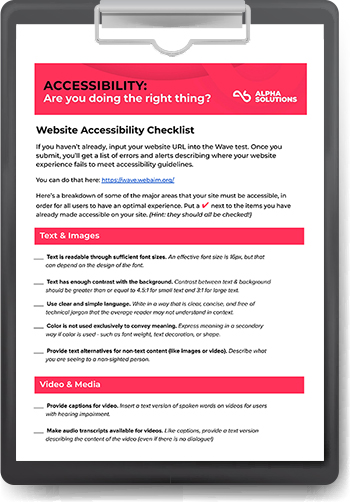Selecting the right digital experience platform (DXP) is essential for businesses that aim to enhance their online presence and customer engagement in the future.
This article will cover the key aspects of DXPs, their usage, benefits, and some leading examples.
Additionally, we’ll give you insights into developing a strategy for upgrading existing technology to incorporate a new DXP, focusing on customer acquisition, lead nurturing, and personalized promotions.
What is a Digital Experience Platform (DXP)?
A digital experience platform, or DXP, is an integrated software framework that helps businesses manage, deliver, and optimize digital experiences across various touchpoints.
The best digital experience platform for you will be one that encompasses a range of tools and technologies designed to create, manage and deliver content, engage with customers, and analyze user interactions.
DXPs are pivotal in today’s fast-paced digital-first world, where customer expectations for seamless, personalized digital experiences are constantly rising.
In the past, we relied on content management systems which left gaps in the overall process involving content creation, publishing, measurement, and iteration.
A digital experience platform is a whole-picture solution to map the entire digital customer journey and lifecycle.
It’s next-level!
Top 3 Benefits of Digital Experience Platforms
Customers are constantly expecting more from their digital experiences.
And companies are competing for their attention and loyalty. This is where the power of a digital experience platform comes in.
Think: seamless and personalized experiences across all channels and touchpoints.
Let’s review some of the major benefits you’ll gain from implementing the best DXP -
Centralized Content Management and Consistency
DXPs offer centralized content management, allowing organizations to maintain consistency across multiple channels.
This centralization ensures that customers receive a uniform experience, whether they interact with the brand via a mobile app, website, social media, or any other digital channel.
Enhanced Customer Experience and Personalization
By leveraging data analytics and AI, DXPs can deliver personalized content and recommendations to users, significantly enhancing the customer experience.
Personalization has become a key driver in customer satisfaction and loyalty.
Agility and Scalability
DXPs are designed for agility and scalability, enabling businesses to quickly adapt to market changes and customer needs. This flexibility is crucial in a rapidly evolving digital landscape.
Major Digital Experience Platforms
How do you know which digital experience platform will serve you and your customers the best?
Several leading DXPs stand out in the market, each with unique features and capabilities. Some of the major platforms that we support include:
|
|
Sitecore Platform: Offers a powerful blend of content management, personalization, and multichannel marketing automation. |
|
|
Optimizely: Offers marketing teams and others the ability to manage and optimise their digital activity and customer experience across every touchpoint |
 |
Acquia: Built on Drupal, Acquia is known for its flexibility and open-source nature, allowing for extensive customization. |
|
|
Adobe Experience Manager: Known for its robust content management capabilities and extensive integration options. |
Choosing the best digital experience platform for your business will come after you develop a DXP strategy.
Then, you’ll need an implementation partner who has solid expertise in developing exactly what you need.
Personalized Promotions and Lead Nurturing with a DXP
With a super-charged DXP, you can leverage customer data to create personalized promotions and nurture leads more effectively.
This involves using customer behavior, preferences, and engagement history to deliver targeted content and offers.
Major brands are choosing to integrate artificial intelligence (AI) into their DXPs to enhance their capabilities and provide even more personalized, efficient, and intelligent digital experiences.
Let’s take a look at the power of AI for this solution.
10 ways that AI is being used in DXPs:
1. Personalization
-
Content Personalization: AI algorithms analyze user behavior, preferences, and engagement history to deliver tailored content and recommendations, enhancing user experience and engagement.
-
Dynamic Content Optimization: AI can automatically adjust and optimize the content shown to different users based on their interactions and preferences.
2. Customer Insights and Analytics
-
Predictive Analytics: AI helps in predicting customer behavior and trends, allowing businesses to anticipate needs and tailor their strategies accordingly.
-
Customer Segmentation: AI-driven data analysis allows for more precise customer segmentation within the digital experience platform, enabling targeted marketing and communication strategies.
3. Chatbots and Virtual Assistants
-
Automated Customer Support: AI-powered chatbots and virtual assistants provide instant support to users, handling inquiries and guiding them through website navigation.
-
Enhanced User Interaction: These tools can learn from interactions to provide more accurate and helpful responses over time.
4. Search Functionality
-
Intelligent Search: AI enhances search functionalities within websites, making them more intuitive and capable of understanding natural language queries.
-
Search Result Optimization: AI can tailor search results based on user behavior, improving the relevance and effectiveness of search functionalities.
5. Content Management
-
Automated Content Tagging and Categorization: AI can automatically tag and categorize content in your digital experience platform, improving content management efficiency and discoverability.
-
Content Generation: Some advanced DXPs use AI to assist in generating basic content drafts or suggest content improvements.
6. Marketing Automation
-
Behavioral Triggering: AI algorithms can trigger marketing actions based on user behavior, such as sending personalized emails when a user abandons a shopping cart.
-
Campaign Optimization: AI can analyze the performance of different marketing strategies and suggest optimizations.
7. Voice Recognition and Natural Language Processing (NLP)
-
Voice-Enabled Navigation: Integration of voice recognition allows users to interact with the platform using voice commands.
-
NLP for Understanding Intent: NLP is used to understand user intent, enabling more effective and human-like interactions.
8. Image and Video Recognition
-
Visual Search: Users can search for products or information using images, enhancing the user experience, especially in e-commerce platforms.
-
Automated Video Analysis: AI can analyze video content for better indexing and searchability.
9. Accessibility Enhancements
-
Automated Alt Text for Images: AI can generate descriptive alt texts for images, improving accessibility for visually impaired users.
-
Personalized Accessibility Settings: AI can adjust website interfaces to meet individual user needs, like changing contrast or font size based on user preferences or behaviors.
10. Security and Fraud Detection
-
Anomaly Detection: AI can detect unusual patterns that might indicate security threats or fraudulent activities.
-
Automated Compliance Checks: Ensuring content and user interactions comply with legal standards and regulations.
AI has the ability to make DXPs more adaptive, efficient, and personalized. These advancements are not only enhancing user experiences but also providing businesses with deeper insights and more effective tools for digital engagement and marketing.
As AI technology continues to evolve, its integration within digital experience platforms is likely to become even more sophisticated and integral to digital experience management.
There are big brands employing the use of AI-powered digital experience platforms very effectively to personalize ecommerce, predict user behavior, serve customized content, and more.
Here are some examples of major brands using AI and DXPs effectively:
Amazon
Amazon's DXP leverages AI to provide personalized shopping experiences.
The Amazon recommendation engine, powered by AI, analyzes customer behavior, preferences, and past purchases to suggest relevant products.
The integration of Alexa, its AI-powered voice assistant, allows Amazon’s customers to shop, track orders, and interact with the platform using voice commands.
Netflix
Netflix uses AI to personalize its streaming experience.
The Netflix algorithm analyzes viewing habits to recommend movies and TV shows, tailoring the home screen for each user. AI is used to select the most appealing thumbnail images for shows and movies, based on individual user preferences and engagement history.
Spotify
Spotify’s DXP uses AI to curate personalized playlists and recommend songs.
The Spotify “Discover Weekly” and “Daily Mix” playlists are tailored to individual users' musical tastes, learned through AI algorithms. AI is also used by Spotify for analyzing audio features of tracks to understand music preferences and make relevant suggestions.
Starbucks
Starbucks employs AI in its DXP to offer personalized marketing.
The Starbucks “Deep Brew” AI program suggests personalized menu items to customers through their app, based on their past orders and preferences. AI is used to analyze local preferences and traffic patterns to determine store locations and optimize inventory.
Sephora
Sephora's DXP includes an AI-powered “Virtual Artist” feature, allowing customers to virtually try on makeup using their mobile device.
This tool enhances the online shopping experience and aids in product selection. The Sephora DXP platform uses AI to recommend products based on individual user skin types, preferences, and past purchases.
Bank of America
Bank of America’s DXP includes “Erica,” an AI-driven virtual assistant that helps customers with transactions, account inquiries, and financial guidance, providing a personalized banking experience.
Source: Forbes
Nike
Nike’s DXP uses AI to offer personalized product recommendations and content.
The Nike Fit tool uses AI to scan users' feet and recommend the best shoe size, enhancing the online shopping experience. AI analyzes customer data to inform product design and inventory management.
Alibaba
Alibaba uses AI in its DXP to personalize the shopping experience, from product recommendations to search results, based on user behavior and preferences.
The Alibaba AI systems optimize logistics, predicting the best routes and managing inventory, enhancing operational efficiency.
All of these examples show how AI can transform DXPs, making them more personalized, efficient, and innovative.
By leveraging AI, these brands have significantly improved customer engagement and operational efficiency, setting new standards in their respective industries for digital experiences.
You can do this for your business, too.
|
How accessible is your website? Get our free accessibility checklist to guide your efforts for getting compliant and doing the right thing. Plus, receive real feedback from us to help you on your next steps. |
The Power of DXPs Beyond E-commerce
E-commerce is not the only place for a digital experience platform solution.
There are other types of companies or sectors that are prime candidates for leveraging DXPs, especially those with complex digital needs, diverse customer bases, and the requirement for omnichannel presence.
Take a look at these examples:
Traditional Retail Chains
Many traditional brick-and-mortar retailers, especially those yet to fully embrace digital transformation, could significantly benefit from DXPs. Implementing a DXP could help these retailers to:
-
Integrate online and offline experiences
-
Personalize customer interactions
-
Improve e-commerce capabilities
Healthcare Providers
While some healthcare providers have started embracing digital tools, many could further benefit from DXPs to offer:
-
Better patient experiences
-
Personalized health information
-
Streamlined appointment booking system
In particular, the use of AI in healthcare systems can completely transform the way that data is managed.
Educational Institutions
Universities and schools that haven't fully utilized digital platforms could use DXPs to provide:
-
Personalized learning experiences
-
Facilitate remote education
-
Manage a wide range of educational content more effectively
Government Services
Many government agencies still rely on outdated digital infrastructure. DXPs could revolutionize how citizens access information and services, improving personalization, accessibility, and user experience.
Travel and Hospitality Brands
While some airlines, hotels, and travel agencies have robust digital platforms, othersstill lag behind. These brands could use DXPs to offer
-
Personalized travel experiences
-
Streamlined booking processes
-
Enhanced customer engagement
Small to Medium-Sized Enterprises (SMEs)
Many SMEs, due to limited resources, haven't adopted advanced digital platforms. DXPs could help these businesses scale their digital presence, manage content across channels, and engage customers more effectively.
Publishing Houses
Traditional publishers could use DXPs to:
-
Manage digital content
-
Offer personalized reading experiences
-
Integrate various digital channels
E-books, audiobooks, and online articles can be accessed more seamlessly.
Automotive Dealerships
While major automotive brands often have sophisticated digital platforms, individual dealerships might not. These dealerships could use DXPs to:
-
Provide personalized experiences for potential buyers
-
Showcase vehicles online
-
Integrate sales and service experiences
For these industries and businesses, adopting a DXP could offer significant advantages, such as enhanced customer engagement, streamlined operations, and improved digital presence.
However, the decision to implement a DXP should be based on a thorough analysis of the business's specific needs, goals, and existing digital infrastructure.
How to develop your own DXP strategy
Developing a Digital Experience Platform (DXP) strategy involves several key steps, focusing on aligning the platform's capabilities with your business goals and customer needs.
A successful DXP strategy will help you to avoid challenges that organizations often face without a proper plan in place.
Here's a structured and comprehensive approach to formulating an effective DXP strategy:
1. Understand Your Business Objectives
Identify what you want to achieve with your DXP. This could include improving customer engagement, enhancing online sales, streamlining content management, or integrating various digital channels.
Then, ensure that your DXP strategy complements your overall business strategy. For instance, if your goal is market expansion, your DXP should support multi-language content and localization features.
2. Analyze Your Audience and Their Journey
Gather data about your customers – their preferences, behaviors, and pain points. Use this data to understand what they expect from your digital experience.
You’ll want to map out the customer journey to identify key touchpoints where a DXP can enhance the experience. This includes awareness, consideration, purchase, and post-purchase stages.
3. Conduct a Technology Audit
Evaluate your existing digital tools and platforms. Identify gaps, inefficiencies, or areas where your current technology falls short in meeting customer expectations or business needs.
Following that, assess how well a DXP can integrate with your current systems. Seamless integration is crucial for data flow and user experience.
4. Choose the Right DXP
Based on your goals and customer needs, identify the features most critical in a DXP, such as personalization trends, content management, analytics, or e-commerce capabilities.
Research and compare different DXP providers. Consider factors like scalability, support, community, and track record.
Before fully committing, consider conducting a proof of concept with shortlisted platforms to validate their fit with your requirements.
This step is critical - you must ensure the platform can integrate with your existing systems and will support your future growth plans.
Not sure where to start with this? Contact us for our unbiased opinion based on your business goals. We’re here to help you make this decision the right one.
5. Plan Implementation
Create a phased technology implementation plan or roadmap. This should include key milestones, such as integration with existing systems, content migration, and user training.
Ensure you have the necessary resources, including budget, personnel, and technology.
This process requires careful planning and often the assistance of experienced partners like Alpha Solutions.
6. Focus on Data and Personalization
Develop a strategy for collecting, managing, and leveraging customer data to create personalized experiences.
Implement tools for ongoing data analysis to continually refine and personalize your customer experience strategy.
7. Prioritize User Experience
Apply design thinking principles to ensure the DXP is user-friendly and aligns with user needs and behaviors.
Ensure that your platform is accessible to all users, including those with disabilities.
8. Training and Change Management
Educate your team about the new DXP – its features, best practices, and how to use it effectively.
Be prepared for organizational change. This includes communicating the benefits of the new system and addressing any resistance to change.
9. Measure and Optimize
Define key performance indicators (KPIs) to measure the success of your DXP. Use analytics to gain insights and make data-driven decisions.
Regularly review the performance of your DXP and make adjustments as needed. Stay updated with new features and trends in digital experience.
10. Security and Compliance
Ensure the DXP complies with data security standards and regulations like GDPR.
Conduct regular security audits and updates to protect customer data and privacy.
Developing a DXP strategy requires a thoughtful approach, aligning technology with business objectives and customer needs.
By following these steps, you can create a robust DXP strategy that enhances your digital presence, improves customer experiences, and drives business growth.
In Conclusion
A successful digital experience platform implementation is not just about deploying new technology, but also about transforming how an organization engages with customers across all digital channels.
Choosing and implementing the right digital experience platform is a strategic decision that can significantly impact your business’s digital capabilities.
By understanding what a DXP is, its benefits, and how to strategically implement one, you can enhance customer engagement, streamline content management, and drive business growth.
Our team at Alpha Solutions would be happy to assist you in this journey, providing expertise in various DXPs and support in developing a comprehensive digital experience platform strategy tailored to your business needs.
Ready to DXP, or curious to learn more? Contact us today to understand the best options for your business needs and goals.



















